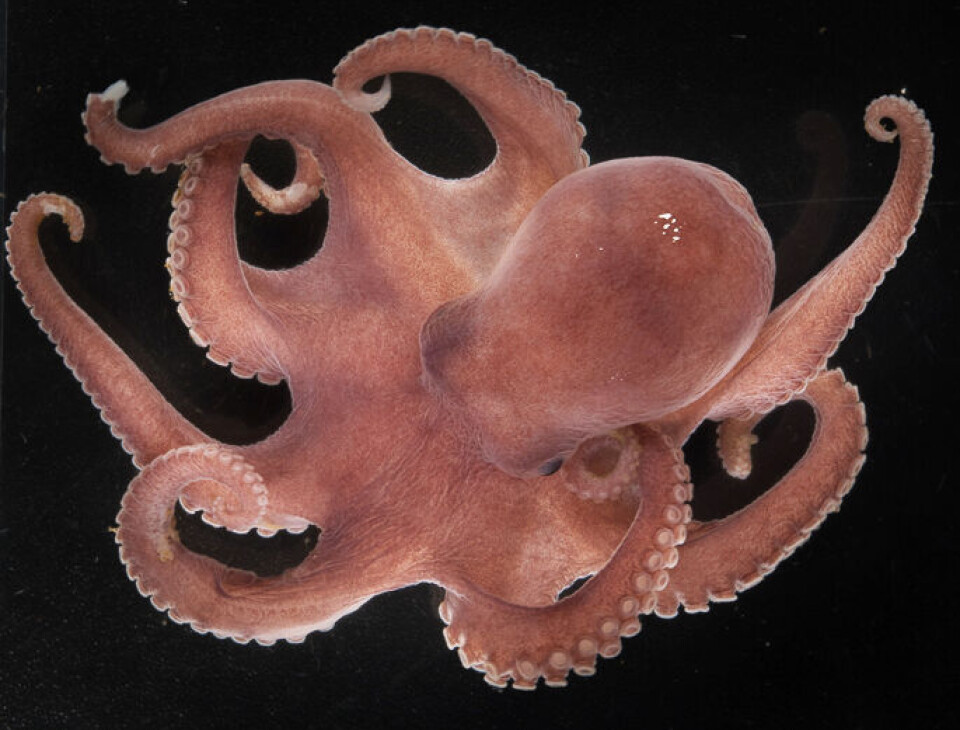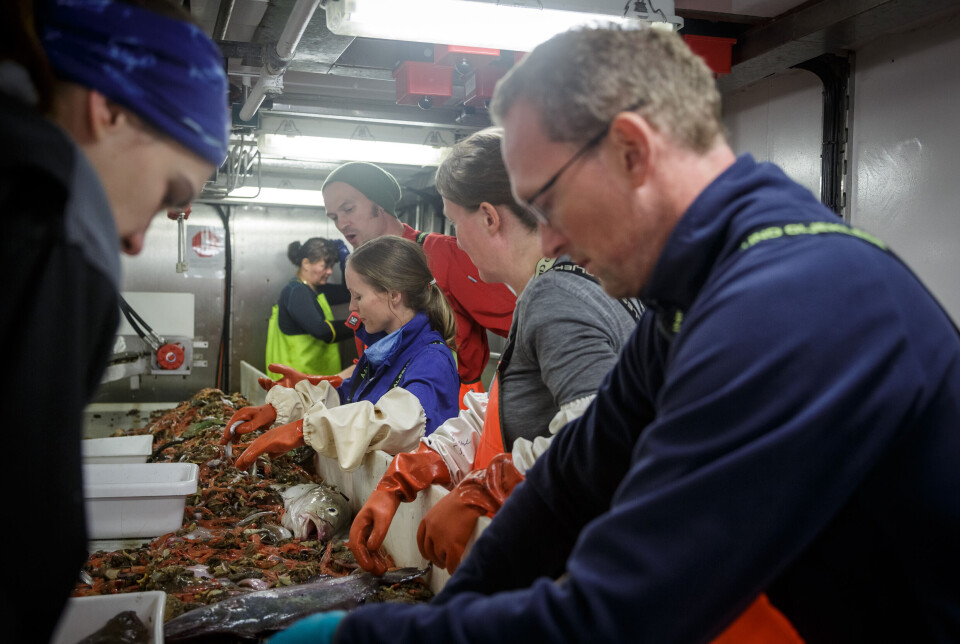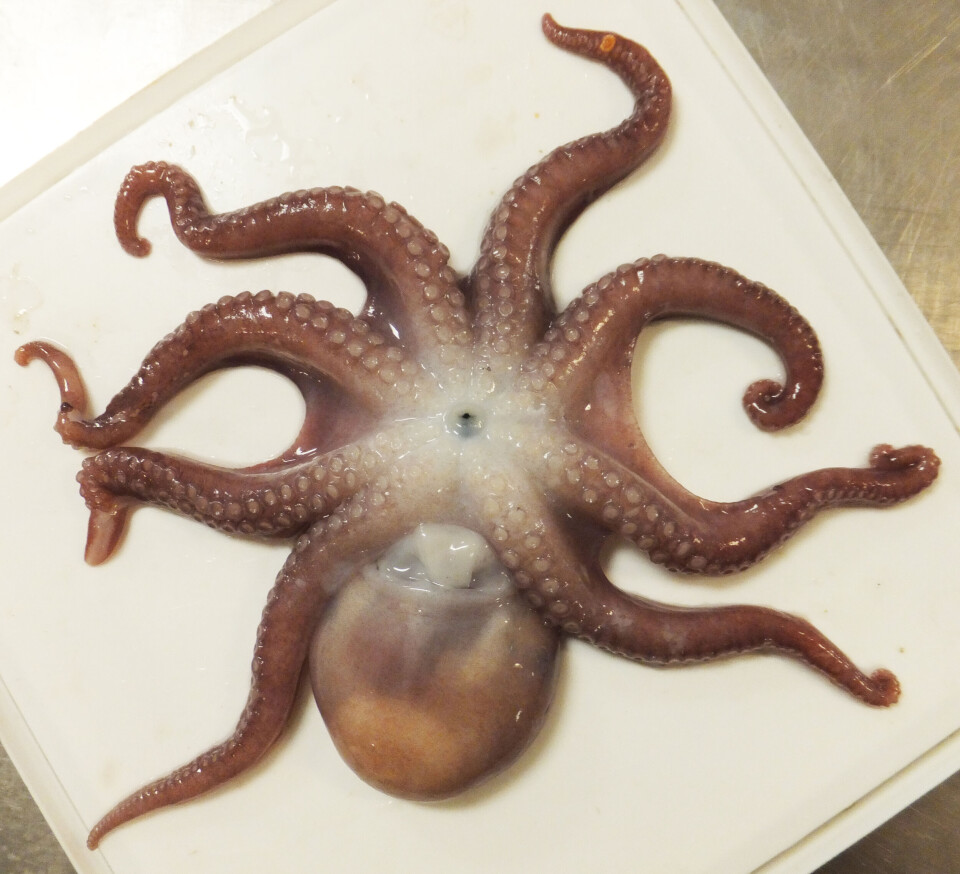THIS CONTENT IS BROUGHT TO YOU BY the Institute of Marine Research - read more

Researchers have discovered a new deep-sea octopus at a depth of 2,500 metres
“There is a mystique surrounding these deep-sea octopuses because there are so many unanswered questions," researcher says.
There is still much to be discovered far below the ocean surface. Recently, researchers have identified a new piece of the puzzle.
Down to 2,500 metres depth in Arctic waters lives an octopus previously unknown to science.
Last autumn, researchers formally described a new octopus: Muusoctopus aegir.
The deep-sea octopus lives along the continental Scandinavian slope to Svalbard and eastward to the Kara Sea.
“Discovering and scientifically identifying species is incredibly important - otherwise, we might lose them before we even knew they were here,” says Lis Lindal Jørgen.
The marine researcher is one of the scientists who has now introduced the octopus to science.
Incredible joy
Every year, the Institute of Marine Research (IMR) conducts ecosystem surveys in the Barents Sea.
While the waves crash against the bow, marine researchers work diligently along the ‘assembly line’ below deck, sorting the different species collected with each trawl haul.
Herring after herring, and mackerel after mackerel, but then... a slightly unfamiliar octopus. Several times over the years, Muusoctopus aegir has appeared as part of the catch.

Jørgensen has participated in countless surveys, but encountering new species is no everyday occurrence, and she never gets used to it:
“It's an incredible joy. I get stars in my eyes and my knees go weak,” she says.
25 individuals have been examined in detail
Researchers suspected they were dealing with a new species as early as 2012, but it takes time to collect enough individuals, enough data, and enough details to be certain.
Cephalopod expert Alexey Golikov from the German GEOMAR in Kiel has painstakingly examined 25 individuals collected from various surveys over several years, comparing even the smallest detail with other known species.
“The length and width of the body parts, as well as the number of suckers on the arms, differ from other known octopuses. The overall picture shows that Muusoctopus aegir is its own species,” explains Jørgensen.

Muusoctopus aegir is a relatively small octopus, up to 23.5 centimetres in length, with eight arms. It is violet-brown in colour, with lighter areas on the belly and a white area around its mouth.
The name of the newly described octopus stems from Norse mythology. Aegir comes from Ægir, the mythological jötunn who ruled the seas.
The name also reflects that the octopus belongs to the genus Muusoctopus. This is the case for 4 of the 12 octopus species currently known in Arctic areas.
It belongs to the family of inkless octopuses (Enteroctopodidae).
Shrouded in mystery
There is still much we don't know about Muusoctopus aegir and its life far, far below the surface of the sea.
“There is a mystique surrounding these deep-sea octopuses because there are so many unanswered questions. We know far too little about them, and therefore, every piece of knowledge we manage to gather is very valuable,” Jørgensen says.
“It's not without reason that the saying goes: We know more about the surface of the moon than the deep sea. Exploring the depths of the ocean is expensive, and requires both time and resources,” she adds.
Reference:
Golikov et al. A review of the genus Muusoctopus (Cephalopoda: Octopoda) from Arctic waters, Zoological Letters, vol. 9, 2023. DOI: 10.1186/s40851-023-00220-x
———
Read the Norwegian version of this article on forskning.no

This content is paid for and presented by the Institute of Marine Research
This content is created by the Institute of Marine Research's communication staff, who use this platform to communicate science and share results from research with the public. The Institute of Marine Research is one of more than 80 owners of ScienceNorway.no. Read more here.
More content from the Institute of Marine Research:
-
These whales have summer jobs as ocean fertilisers
-
Have researchers found the world’s first bamboo coral reef?
-
Herring suffered collective memory loss and forgot about their spawning ground
-
Researchers found 1,580 different bacteria in Bergen's sewage. They are all resistant to antibiotics
-
For the first time, marine researchers have remotely controlled an unmanned vessel from the control room in Bergen
-
New discovery: Cod can adjust to climate change – from one generation to the next




































